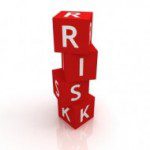Precious metal miners operate in a large variety of countries and our interest in these mining companies on the one hand and country risk exposure on the other led us to compile a comprehensive list of jurisdictions of concern to precious metal investors….[numbering 47 in total. All 47 countries are ranked below].
these mining companies on the one hand and country risk exposure on the other led us to compile a comprehensive list of jurisdictions of concern to precious metal investors….[numbering 47 in total. All 47 countries are ranked below].
So writes an anonymous author posting under the name Itinerant on SeekingAlpha.com from which edited excerpts have been taken from the original article* entitled Country Risk For Mining Jurisdictions – June Edition.
[The following article is presented by Lorimer Wilson, editor of www.munKNEE.com and may have been edited ([ ]), abridged (…) and/or reformatted (some sub-titles and bold/italics emphases) for the sake of clarity and brevity to ensure a fast and easy read. This paragraph must be included in any article re-posting to avoid copyright infringement.]
The article goes on to say in further edited excerpts:
Country risk (factors such as political risk, exchange rate risk, economic risk, sovereign risk, transfer risk, socio-economic risk and others) is evaluated and rated by numerous organizations catering to government entities, financial organizations or other parties….Depending on the source, various contributing factors of country risk are weighted differently. Readers interested in the specific definitions are encouraged to follow the links to our sources documented below.
Precious metal miners operate in a large variety of countries and our interest in these mining companies on the one hand and country risk exposure on the other led us to compile a comprehensive list of jurisdictions of concern to precious metal investors….[numbering 47 in total]….Does that sound a lot? Considering that there are 196 countries in the world our list indicates that precious metals are mined in less than a quarter of jurisdictions worldwide.
- The Fraser Institute conducts an annual survey among mining company executives on various topics related to different mining jurisdictions resulting in a risk index with 100% as the best rating. Some countries even have ratings for selected states or territories.
- The OECD country risk index is often quoted and has been prepared as input for the execution of transactions under the OECD’s Arrangement on Officially Supported Export Credits. Ratings range from 1 to 7, with seven representing the highest risk class. High income OECD countries are not rated and are considered with a rating of 1 in our table.
- The PRS Group is a private consulting firm compiling political risk rankings. Their best rating is 100 and decreases for higher risk countries.
- Coface is a leading credit insurance organisation. It publishes a country risk map assigning 7-tiered risk ratings ranging from A1 to D to every country.
- The Economist Intelligence Unit is a business consulting firm who publish regular rankings on sovereign risk. Its scale has 10 tiers ranging from AAA to D.
- Euromoney is a magazine specializing in reporting on investment matters. Among other services it provides a country risk map with ratings ranging from 0 to 100 with 100 being the least risk.
- Professor Damodaran of New York University publishes a list of country risk premiums for individual countries. To estimate the long term country risk premium, he starts with Moody’s country rating and estimates the default spread for that rating over the Treasury bond rate. This becomes a measure of the added country risk premium for that country.
- The Basel Institute of Governance provides intelligence for financial institutions and also allows public access to its country risk ranking with scores between 0 and 10, with ten being the highest risk.
The countries which we identified as precious metal destinations along with all ratings from our eight sources are collated in the table below. We averaged the available ratings for each country into one compounded rating and ranked the countries according to this compounded rating which can be found in the second column from the right of the table. Our compounded country risk ratings range from 0 to 100 with low numbers indicating low risk and high numbers indicating high risk. The right-most column gives a verbal classification, which admittedly was defined by your humble scribe using common sense. The diagram below the table visualizes the ranking.
Not all countries are considered by all the listed sources. The following countries only receive ratings from five sources: Suriname, Senegal, Mauritania, Burkina Faso, Niger, Guinea, Mali. Data from four sources was recorded for Ethiopia and the Kyrgyz Republic; three sources gave ratings for Eritrea; and only two sources provided data for Fiji. For obvious reasons the compounded rating loses in quality for countries with fewer sources to serve as input.
 munKNEE.com Your Key to Making Money
munKNEE.com Your Key to Making Money



